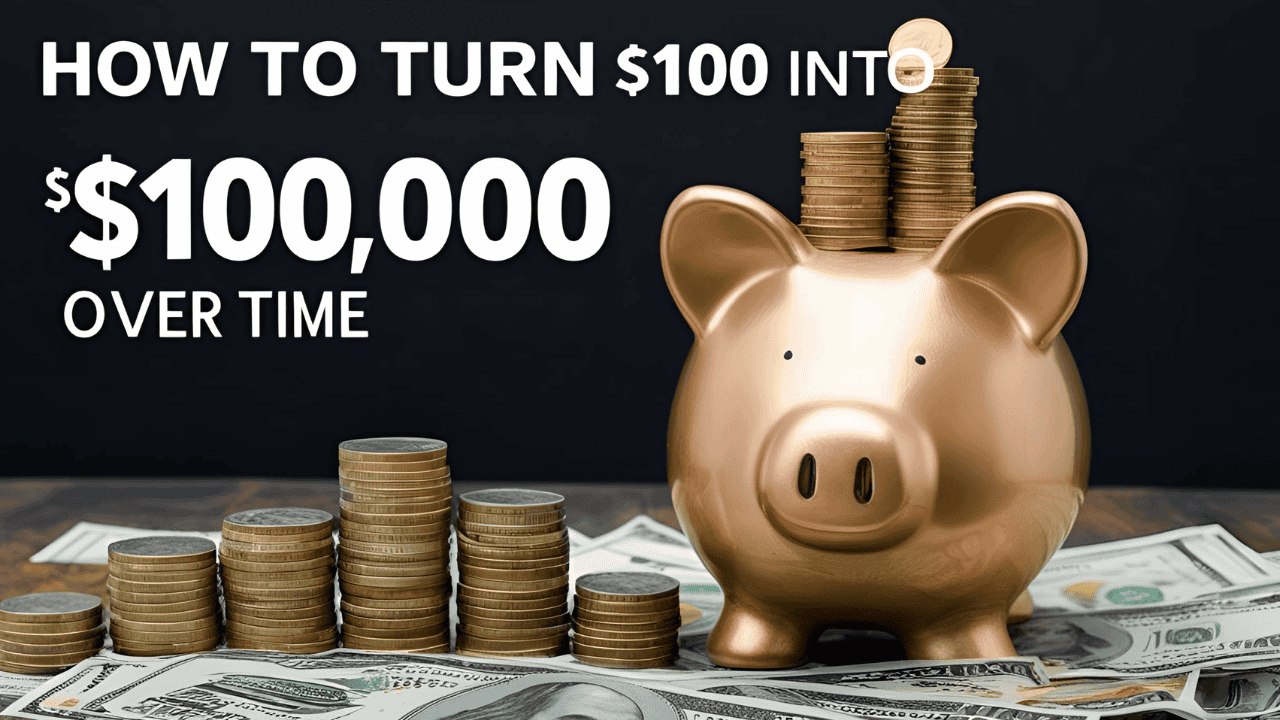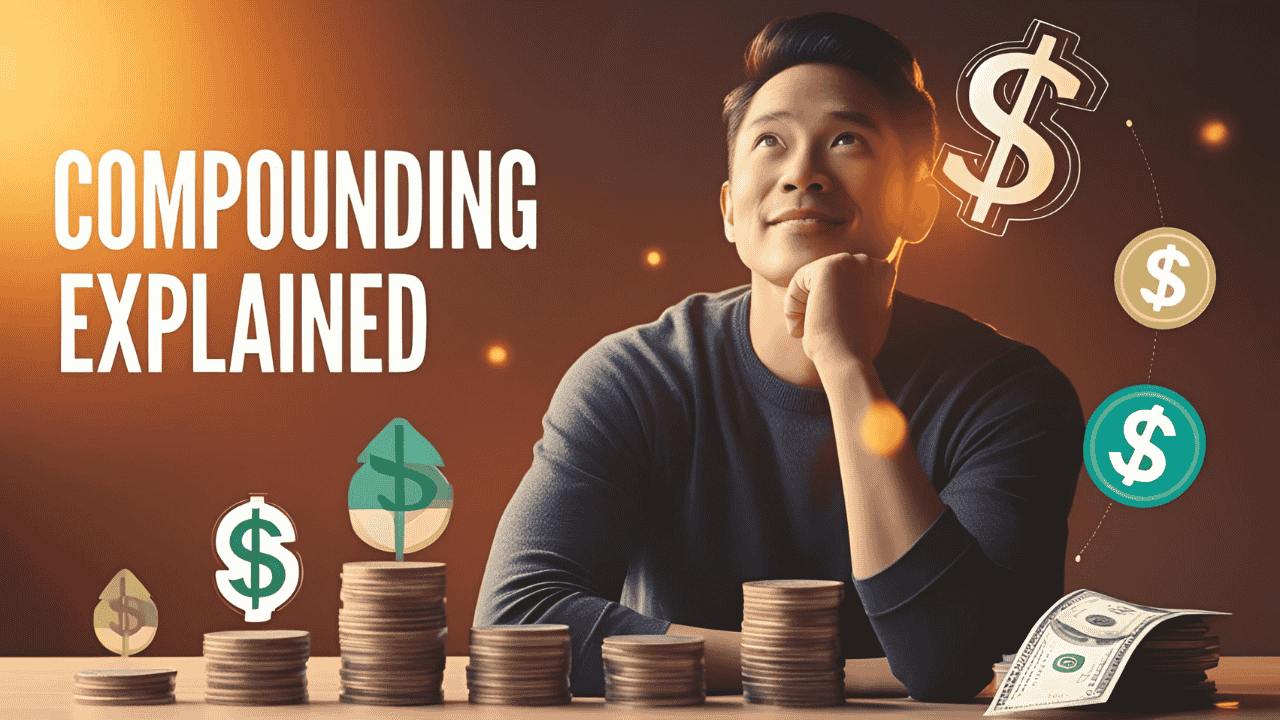Earning money in the stock market is everyone’s dream, right? But what if I tell you that you can go from starting with just $100 to $10,000, and that too without taking much risk? What do you think?
The answer is simple: Compounding. This is such a magic trick which can make even small investors rich in the long term. And the most important thing? You don’t need to be a genius in math.
In this article, we will understand compounding in simple terms. Whether you are a beginner or an intermediate investor, this guide will show you step by step how small starts can bring big results using just the right approach and patience.

What is Compounding in Simple Words?
In simple, Compounding means getting interest on interest also.
When you invest $100 and get a 10% return, you end up with $110. The next year, this $110 grows, not just your first $100. This way, new returns are generated on your returns every year. That’s the magic of compound interest. Got it? Or still have any confusion? If you are confused, please let us know through the comment box, and we will surely help you.
Why Compounding Is a Game Changer
Many people think that investing means “invest more and more money and get rich quickly.”
But the truth is that slow and steady investing, with the power of compounding, is more powerful in the long term. Imagine if you invest $100 every month for 20-25 years and expect returns of 10%; you can become a millionaire. And all this is possible because of compounding.
Real-Life Example: $100 to $10,000
Let’s do some real-world math with simple numbers.
Situation:
- Initial Investment: $100
- Annual Return: 10%
- Time Period: 47 Years
- No withdrawals
After 47 years, this $100 turns into approx $10,000+
It may seem like it took a lot of time, but think, what would happen if you invested $100 every month? Then your money can become millions of dollars. And that’s no big deal; it’s just the power of time + consistency.
Compounding vs. Simple Interest
It is important to understand why compounding is different from simple interest.
- Simple Interest: Interest is received only on the principal amount.
- Compound Interest: Every year’s interest also earns the next year’s interest.
Example:
- $100 @10% simple interest for 3 years = $130
- $100 @10% compound interest for 3 years = $133.10
The more time, the more difference. Basically, what happens in compounding interest is that you get the interest on interest, as mentioned earlier in the post.
How Does Compounding Work?
Should we get a little technical to understand how compounding works? Compound Interest Formula: A = P (1 + r/n) ^ nt
- A = final amount
- P = initial investment
- r = annual interest rate (decimal form)
- n = compounding frequency per year
- t = number of years
This formula tells you how much money you will make over time.
But even if you don’t understand the math, no problem. Keep this in mind: The more time you spend, the more you grow.
Factors That Make Compounding Work
1. Early Start
The sooner you start investing, the more time compounding gets to grow.
2. Consistent Investment
Investing a little each month, like $100 per month, fuels compounding.
3. Reinvestment of Returns
Invest the returns back. This is the real engine of compounding.
4. Right Return Rate
Investments that return 10-12%, such as index funds, are best suited for compounding.
Common Myths About Compounding
1. “I need more money to start”
No! Compounding works even with small amounts.
2. “Only rich people can invest”
Totally wrong. Students can also start from $10–$50 monthly.
3. “The stock market is risky”
Risk can be managed by long-term investing and diversification.
The Power of Time: A Shocking Comparison
Let’s take our friend’s example:
John:
- Starting age: 20
- Invests $100/month for 10 years
- Total invested: $12,000
Jack:
- Start age: 30
- Invests $100/month for 30 years
- Total invested: $36,000
Assuming 10% return:
- John’s income at the age of 60: $379,000+
- Jack’s income: $219,000+
Wondering how? John started first. That’s how compounding rewards early starters.
Where to Invest for Best Compounding
1. Index Funds (e.g., S&P 500)
Gives average 10-12% returns in the long term. Easy, low-risk option for beginners.
2. Mutual Funds
You can start monthly investing through SIP.
3. Dividend Reinvestment Stocks
Invest in companies that give regular dividends and reinvest the dividends.
4. ETFs (Exchange Traded Funds)
Diversification and compounding are both available.
Tips to Maximize Compounding
- Start NOW, not later
- Set automatic investments
- Track progress yearly
- Ignore short-term ups and downs
- Reinvest 100% of returns
Remember, compounding is a marathon, not a sprint.
Beginner Mistakes to Avoid
1. Frequent Withdrawals
Compounding breaks.
2. Irregular Investment
Compounding needs consistency.
3. Low Return Options
Low return investments like bank funds slow down compounding.
4. Late Start
Every year’s delay majorly affects future returns.
FAQs About Compounding
Q1: Is compounding available only in the stock market?
Well, compounding is also available in mutual funds, ETFs, and even savings accounts.
Q2: Are returns fixed?
No, returns in market-based investments fluctuate, but long-term average returns are stable.
Q3: Is it necessary to invest every month?
Yes, the compounding effect becomes stronger with regular investment.
Q4: Should the dividend be invested back again?
Absolutely! Reinvested dividends boost compounding.
Final Words: How to become a $10,000 investor starting with $100?
You don’t need to invest lots of money at once to become a millionaire. You can just start with $100 and keep doing it with discipline, patience and compounding.
- Start early and invest regularly.
- Reinvest everything.
- Time is the biggest multiplier.
- Ignore short-term losses.
- Stick with the process.
Whether you are a student, a job seeker or a freelancer, start investing today. Even $100 is enough. There will come a time when you will say to yourself, “Really, compounding is a miracle.
Thanks for reading this article. If you have any questions, please ask them using the comment box.
